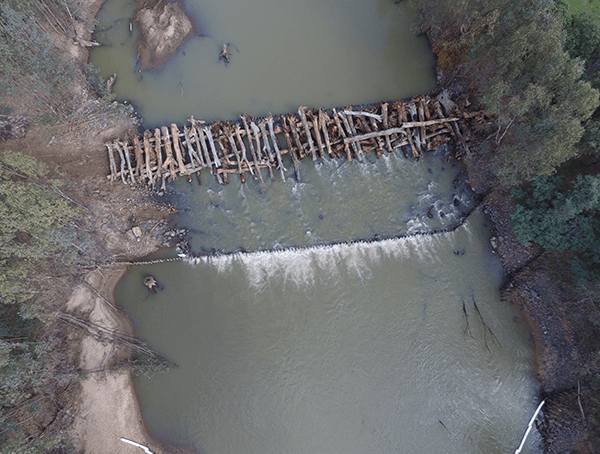|
|
Discrete log jam structuresDiscrete log jams structures are an engineered arrangement of logs that are typically held in place with vertically driven piles. Generally, the aim of log jams is to temporarily modify the near-bank hydraulics of a specific site by providing an artificial form of flow resistance that naturally would have been provided by large woody debris. If used to manage bank erosion, a series of log jams may be required to sufficiently reduce the flow velocity and erosion. Log jams will generally improve fish habitat and cause some localised scour and deposition that will contribute to improving the geomorphic diversity of the reach. These structures are used in cases where there is either a lack of supply of large wood, or the conditions mean it is buried or transported quickly making it ineffective, or both. The long-term goal should be to address any underlying issues in large wood supply or transport/burial. Potential benefits from this intervention:
Potential negative implications from this intervention:
Intervention considerations:
Additional informationPublications: Brooks, A. 2006. Design guideline for the reintroduction of wood into Australian streams. Land & Water Australia. Canberra. Daley, J. and Brooks, A.P. 2013. A performance evaluation of Engineered Log Jams in the Hunter Valley. Griffith University, 53 pp. ISBN 978-1-922216-23-6. Last updated: 10 June 2022 This page should be cited as: Department of Environment, Science and Innovation, Queensland (2022) Discrete log jam structures, WetlandInfo website, accessed 8 May 2025. Available at: https://wetlandinfo.des.qld.gov.au/wetlands/management/rehabilitation/rehab-process/step-4/intervention-options/discrete-log-jam-structures-mod.html |

 — Department of the Environment, Tourism, Science and Innovation
— Department of the Environment, Tourism, Science and Innovation


